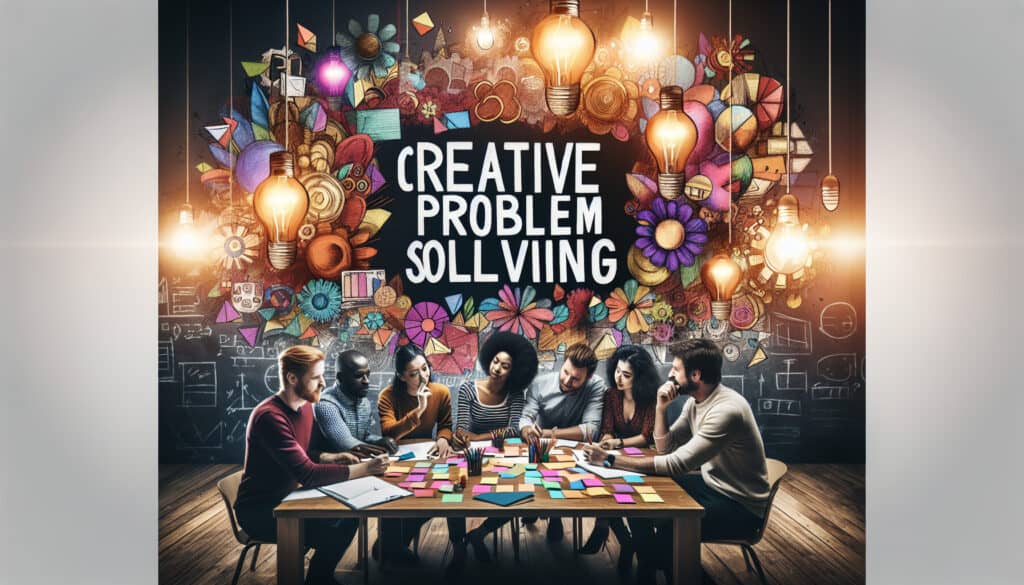A structured process for solving problems or identifying opportunities, conceived by Alex Osborn and Sidney Parnes.
- المنهجيات: الهندسة, تصميم المنتج, إدارة المشاريع
Creative Problem Solving (CPS)

Creative Problem Solving (CPS)
- العصف الذهني, الإبداع, التفكير التصميمي, الابتكار, تقنيات حل المشكلات, تحسين العمليات, إدارة المشاريع, العمل الجماعي, تصميم يركز على المستخدم
الهدف:
كيفية استخدامه:
- CPS follows a formal process that involves multiple stages, such as clarifying the problem, generating ideas (e.g., through brainstorming), and developing and implementing solutions. It separates divergent (idea generation) and convergent (idea evaluation) thinking.
الإيجابيات
- Provides a systematic and repeatable method for innovation; encourages a full exploration of the problem before jumping to solutions; adaptable to various situations.
السلبيات
- Can be more time-consuming and structured than informal brainstorming; requires a facilitator and commitment to the process for best results.
الفئات:
- الأفكار, حل المشكلات
الأفضل لـ
- Tackling complex problems that require innovative solutions by following a structured, multi-stage process.
إبداعي حل المشكلات (CPS) is particularly effective in industries such as product design, technology development, and engineering, where teams face multifaceted challenges requiring innovative approaches. It finds application in sectors like healthcare, where teams tackle issues ranging from patient experience enhancements to medical technology advancements, and in consumer goods, where companies are focused on meeting evolving customer needs and preferences. CPS is ideally implemented during the ideation and prototype phases of product development, allowing teams to explore various concepts and refine their ideas based on user feedback and testing. Cross-disciplinary collaboration among participants such as designers, engineers, marketers, and end-users is encouraged, inviting diverse viewpoints and fostering creativity. This methodology promotes a safe environment for brainstorming without fear of judgment, thereby stimulating a wide array of potential solutions. An example of its application is in automotive design, where teams might address not only aesthetic concerns but also functionality, safety, and sustainability, necessitating a thorough investigation of existing constraints and opportunities before arriving at a final design. The flexibility of the CPS approach allows organizations to adapt it to fit specific contexts and challenges, making it applicable not just in corporate settings, but also in educational environments where students engage in project-based learning and are taught to think innovatively. This structured approach not only increases the likelihood of generating effective solutions but also enhances team cohesion and collective problem-solving capability.
الخطوات الرئيسية لهذه المنهجية
- Identify the challenge or opportunity.
- Clarify the problem statement.
- Generate ideas through brainstorming or other creative techniques.
- Refine and prioritize ideas based on feasibility and impact.
- Develop prototypes or models of selected solutions.
- Test and evaluate prototypes for effectiveness.
- Implement the best solution and monitor results.
نصائح للمحترفين
- Utilize empathy mapping during the problem clarification stage to deeply understand user needs and pain points.
- Incorporate rapid prototyping to test ideas quickly, allowing for iterative feedback and refinement before full implementation.
- Apply the SCAMPER technique during brainstorming to push beyond conventional thinking and refine existing concepts into new solutions.
لقراءة عدة منهجيات ومقارنتها, نوصي باستخدام
> مستودع المنهجيات الشامل <
مع أكثر من 400 منهجية أخرى.
نرحب بتعليقاتكم على هذه المنهجية أو المعلومات الإضافية على قسم التعليقات أدناه ↓، وكذلك أي أفكار أو روابط متعلقة بالهندسة.
منشورات ذات صلة
استبيانات الانزعاج العضلي الهيكلي
الاختبار متعدد المتغيرات (MVT)
تحليل الانحدار المتعدد
أنظمة التقاط الحركة
طريقة MoSCoW
اختبار متوسط المزاج